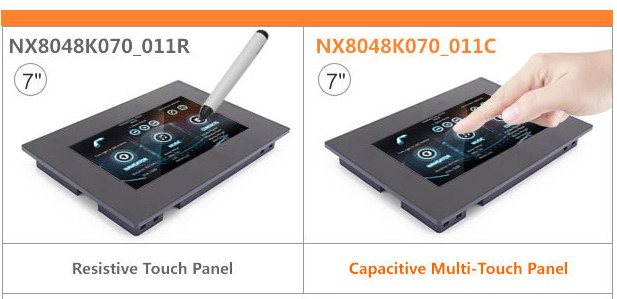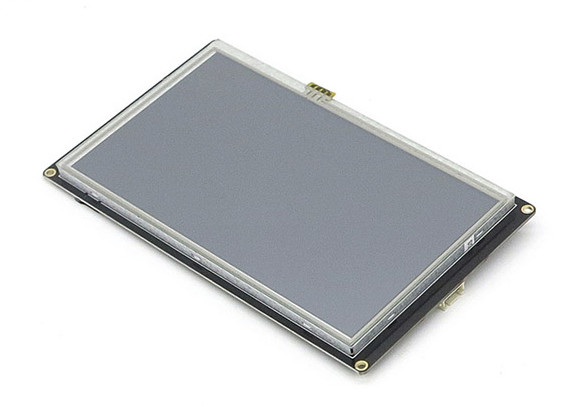Nextion displays are designed to be controlled by MCU boards with the user interface designed in Nextion Editor drag-and-drop tool. ITEAD Studio launched them in 2015, and I played with Nextion 2.4″ and 5.0″ models, but at the time, I found the Windows only Nextion Editor program not to be that user-friendly and inconvenient to use, as for example, UI designs do not automatically scale across all display sizes. The company is now back with a 7″ model, available with resistive or capacitive touch panel, and featuring an ARM7 processor exposing 8 GPIOs.
 Nextion Enhanced NX8048K070 (_011) specifications:
Nextion Enhanced NX8048K070 (_011) specifications:
- CPU – ARM7 processor @ 108 MHz with 8K RAM, 1024 EEPROM, 1024 bytes instruction buffer
- Storage – 32MB flash memory, micro SD card slot
- Display – 7″ TFT display with resistive or capacitive panel; resolution: 800×480; 65K colors; adjustable brightness: 0 to 230 nit
- Expansion – 8x GPIOs including 4x PWM, 4-pin serial interface to MCU board
- Misc – Built-in RTC + battery slot
- Power Supply – 5V/2A through micro USB to 2-pin power board
- Dimensions – Display + board only: 181 x 108 mm; enclosure: 218 x 150 x 22.50 mm
- Weight – Display + board only: 268 g; with enclosure: 598 grams
The display can work in standalone mode controlling external hardware through the 8 GPIOs, or connected to an MCU board over serial. You’ll find a few more technical details in the Wiki. The UI designed in Nextion Editor is stored in the flash memory or micro SD card, and the MCU board can receive / send commands to get user input/update the display. Nextion Editor is still a Windows only program, but if my memory serves me well, it can also work with Linux through Wine using a /dev/ttyUSB0 to COM1 redirect.
 There are four models: NX8048K070_011N without touch support (no sold for now), NX8048K070 with resistive touch sold for $81.90, as well as NX8048K070_011C and NX8048K070_011R both sold with enclosure, and either resistive or capacitive touch respectively for $88.00 and $108.00. It appears the model without enclosure has been selling for a few months already, and the models with enclosure are new.
There are four models: NX8048K070_011N without touch support (no sold for now), NX8048K070 with resistive touch sold for $81.90, as well as NX8048K070_011C and NX8048K070_011R both sold with enclosure, and either resistive or capacitive touch respectively for $88.00 and $108.00. It appears the model without enclosure has been selling for a few months already, and the models with enclosure are new.

Jean-Luc started CNX Software in 2010 as a part-time endeavor, before quitting his job as a software engineering manager, and starting to write daily news, and reviews full time later in 2011.
Support CNX Software! Donate via cryptocurrencies, become a Patron on Patreon, or purchase goods on Amazon or Aliexpress




